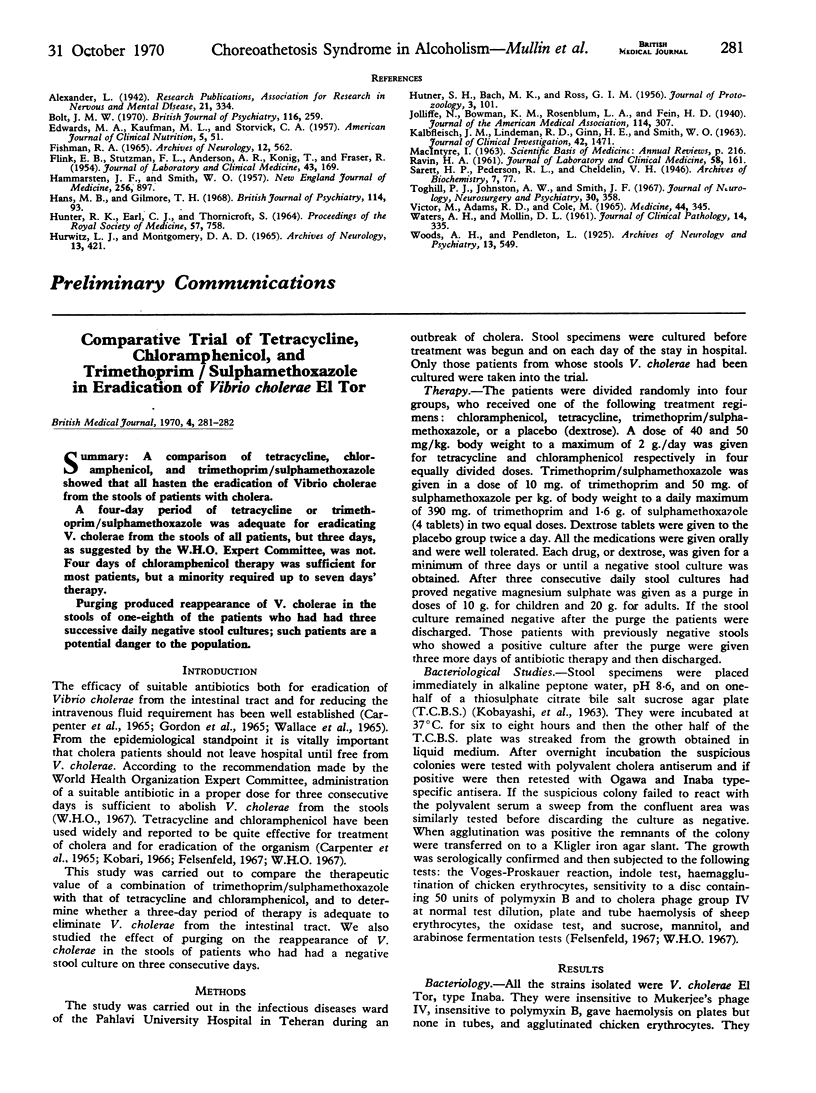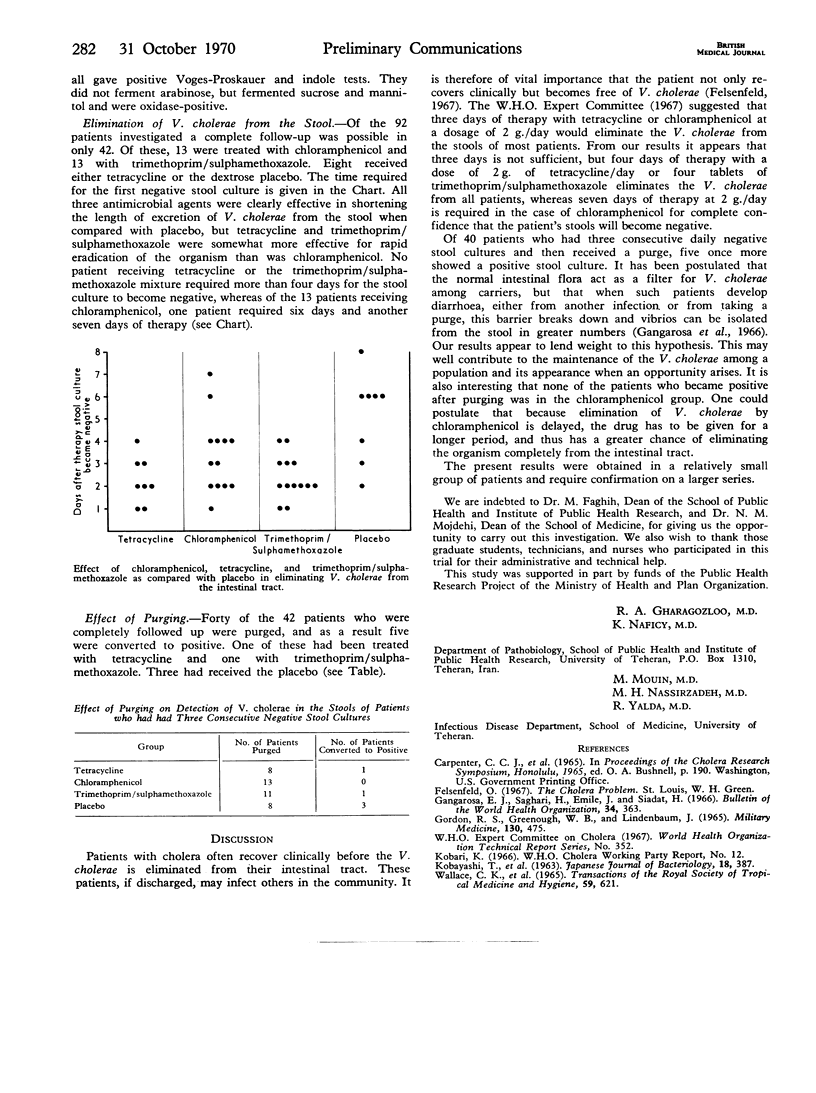Abstract
A comparison of tetracycline, chloramphenicol, and trimethoprim/sulphamethoxazole showed that all hasten the eradication of Vibrio cholerae from the stools of patients with cholera.
A four-day period of tetracycline or trimethoprim/ sulphamethoxazole was adequate for eradicating V. cholerae from the stools of all patients, but three days, as suggested by the W.H.O. Expert Committee, was not. Four days of chloramphenicol therapy was sufficient for most patients, but a minority required up to seven days' therapy.
Purging produced reappearance of V. cholerae in the stools of one-eighth of the patients who had had three successive daily negative stool cultures; such patients are a potential danger to the population.
Full text
PDF

Selected References
These references are in PubMed. This may not be the complete list of references from this article.
- GORDON R. S., Jr, GREENOUGH W. B., 3rd, LINDENBAUM J. THE MANAGEMENT OF EPIDEMIC CHOLERA. Mil Med. 1965 May;130:475–479. [PubMed] [Google Scholar]
- Gangarosa E. J., Saghari H., Emile J., Siadat H. Detection of Vibrio cholerae biotype El Tor by purging. Bull World Health Organ. 1966;34(3):363–369. [PMC free article] [PubMed] [Google Scholar]


